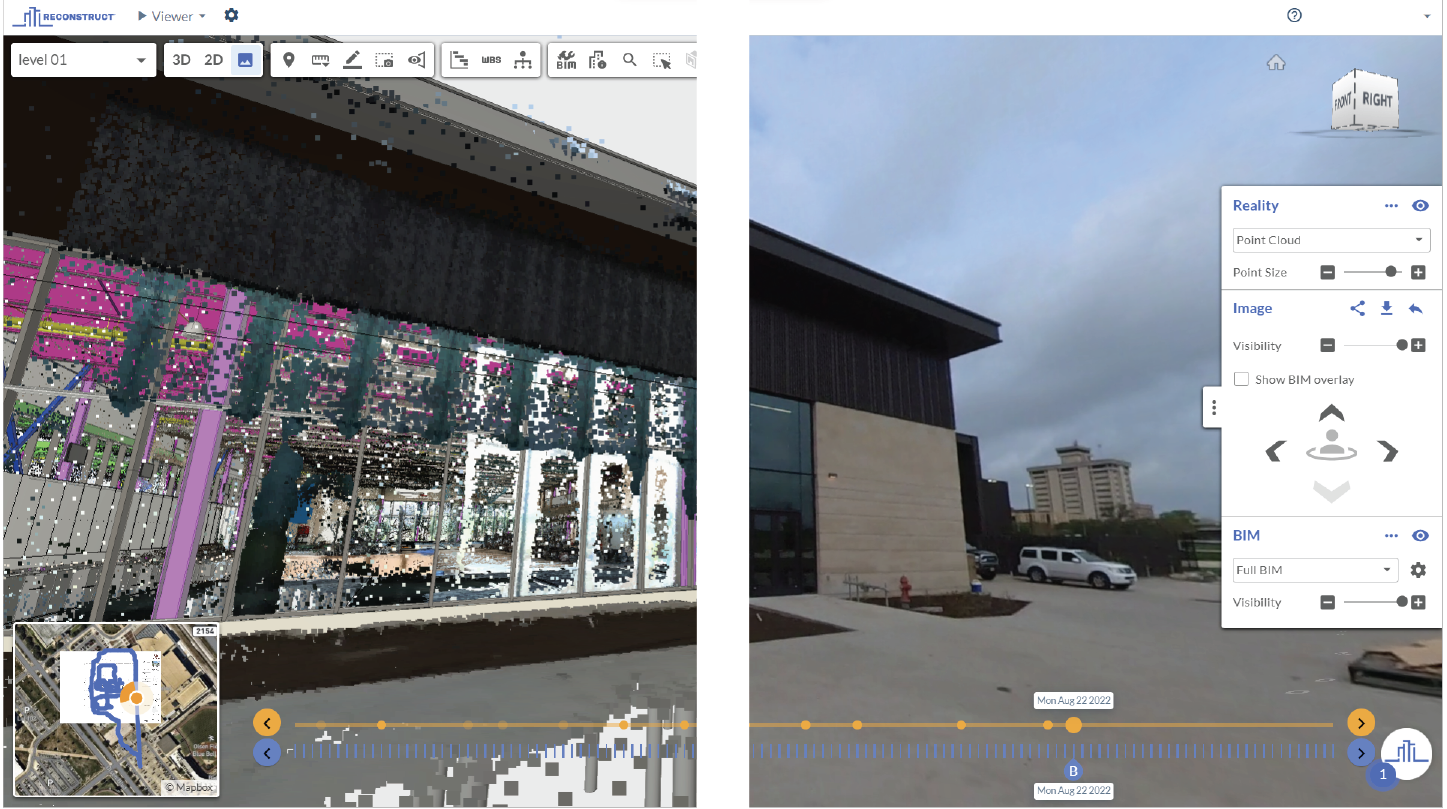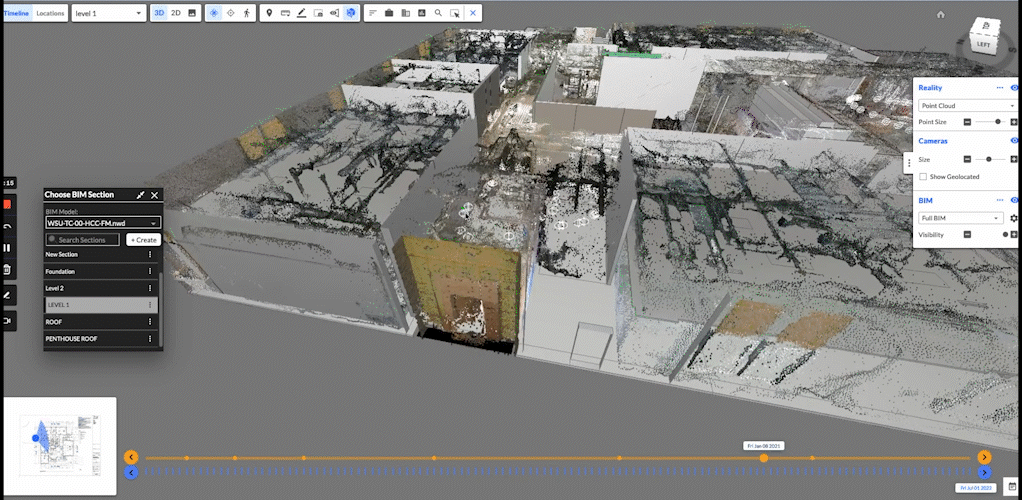Protect yourself from liability claims with a digital twin
There are various use cases for a digital twin, also known as a site survey, 3D scan, or current conditions assessment. A digital twin can be created at the end of construction to create one final piece of as-built documentation, or reality data can be captured throughout construction to create a time-stamped digital archive of how a project was built in space and over time.
In this article, we will zero in on how a digital twin for construction can help protect organizations from liability claims—or settle disputes between stakeholders before they escalate into official claims.
Example 1: A digital twin proves change orders were unnecessary
Often, bidding on a construction project begins before design is officially complete. Contractors are excited, having participated in a bidding process that's been competitive in nature. They understand the scope of the project, and they are ready to get started. But when it’s time to begin work, they realize the design was incomplete. When changes need to happen, they'll often have to go back to the owner and let them know portions of the design were incomplete during the bidding.
When this happens, the contractors want a change order put together so designers can go back and do a little more design. This also means the contractors will be paid more for the extra work (and that the designers will need to do more work for free).
This is when a claim may arise. The designer may come back and say that their design is indeed complete—that the contractor could not correctly interpret the design and that the owner will not be issuing the change order. If these parties take the dispute to court, a digital twin can help offer protection by presenting what actually happened on the job site.
Preventatively, Reconstruct’s design integration tools also allow stakeholders to overlay design drawings and BIM atop the reality of a job site. This can help contractors understand the full design scope long before confusion escalates into legal claims.
This is especially helpful during tenant improvements, retrofits, and rehabilitation projects. The existing site can be captured via a reality capture device, and then, the design can be demonstrated within the context of existing conditions. There is no room for miscommunication, and the contractor understands exactly what needs to be done.
Example 2: A digital twin prevents conflict by clarifying schedule…or resolves claims by proving faulty coordination
Next, imagine you're a contractor responsible for pouring concrete, and you want to place concrete on a slab of grade—the very first floor of construction. To do this, you'll need to wait for the mechanical contractor to come in and place all the pipes, drainage, sewage, and anything else that needs to go underground. Only when that's complete can you come back in and place the concrete.
Here's where the digital twin technology comes in. Suppose the contractor working on the mechanical system falls behind and fails to properly notify the concrete contractor that they cannot place concrete on a given day. In that case, the concrete contractor will have shown up on site with a truck full of materials, expecting to place concrete. Chances are, they've also brought two dozen employees on-site to help them work. But, of course, they can't pour yet—the mechanical work hasn't been installed and inspected yet. Somebody will have to pay for the extra concrete and the labor charges incurred that day.
In this scenario, the digital twin helps dispute a claim. It would take only seconds to prove work was not completed at a given date or time.
Preventatively, the digital twin can empower all teams to properly coordinate schedules and ensure the right people are aware of what tasks are being done and when. Coordination clashes, which can result in costly disputes, can be avoided simply by optimizing communication and transparency between teams.
In other words, Reconstruct brings together reality data and schedule so all teams can create a visual cadence of work. This makes it much easier to identify when the handoff between various contractors has been completed.
Should improving visual schedule coordination not be enough to eliminate liability claims, the digital twin can also act as indisputable evidence of when work was completed.
Example 3: The digital twin demonstrates to the court poor work performed by a subcontractor
Finally, Reconstruct stakeholders rely on as-built documentation to demonstrate when poor quality work has been performed on the job site. Typically, when construction on a project is completed, the project is handed over to the owner, who usually has warranties on all the work performed. After the handover, these owners go through a commissioning process to ensure everything works as promised. But later, when tenants begin using the facility, something might not work.
At that time, the owner may wish to go back and file a claim against the contractor responsible for the “faulty” work. That's where Reconstruct comes in. Using Reconstruct’s time-lapsed sequencing of visual data, stakeholders can always identify what's behind a wall, what's buried underground, and how any given installation details were installed.
If forced to go to court to hold a contractor liable for poor-quality work, the digital twin can be used to demonstrate visualized issues over time without the cost, delay, or disruption of demolition.
One of the key reasons people rely on Reconstruct’s as-built documentation for five to 10 years beyond the completion of construction is to ensure they maintain a complete, timestamped record of how construction happened versus how they were promised it happened. That way, if any discrepancies arise down the road, these owners can protect themselves against the expense of rework.
Related: Remote Construction Monitoring - The Key to Building Sweden’s Tallest Office Tower
About Reconstruct
Reconstruct is the leader in digital twins and as-built documentation for construction, inspection, and engineering stakeholders. With its unparalleled ability to blend footage from virtually any reality capture device—including 360 cameras, smartphones, drones, and laser scanners—almost anybody on the job site can perform regular reality capture, then sit back as that data is transformed into a 3D site survey of the job site as built.
Whether reality capture is performed regularly throughout construction to create a time machine or performed only once at handover for as-built documentation purposes, a digital twin for construction can help virtually every stakeholder protect themselves against future claims.
To learn more about Reconstruct or to see your project in a personalized demo, feel free to contact us.




